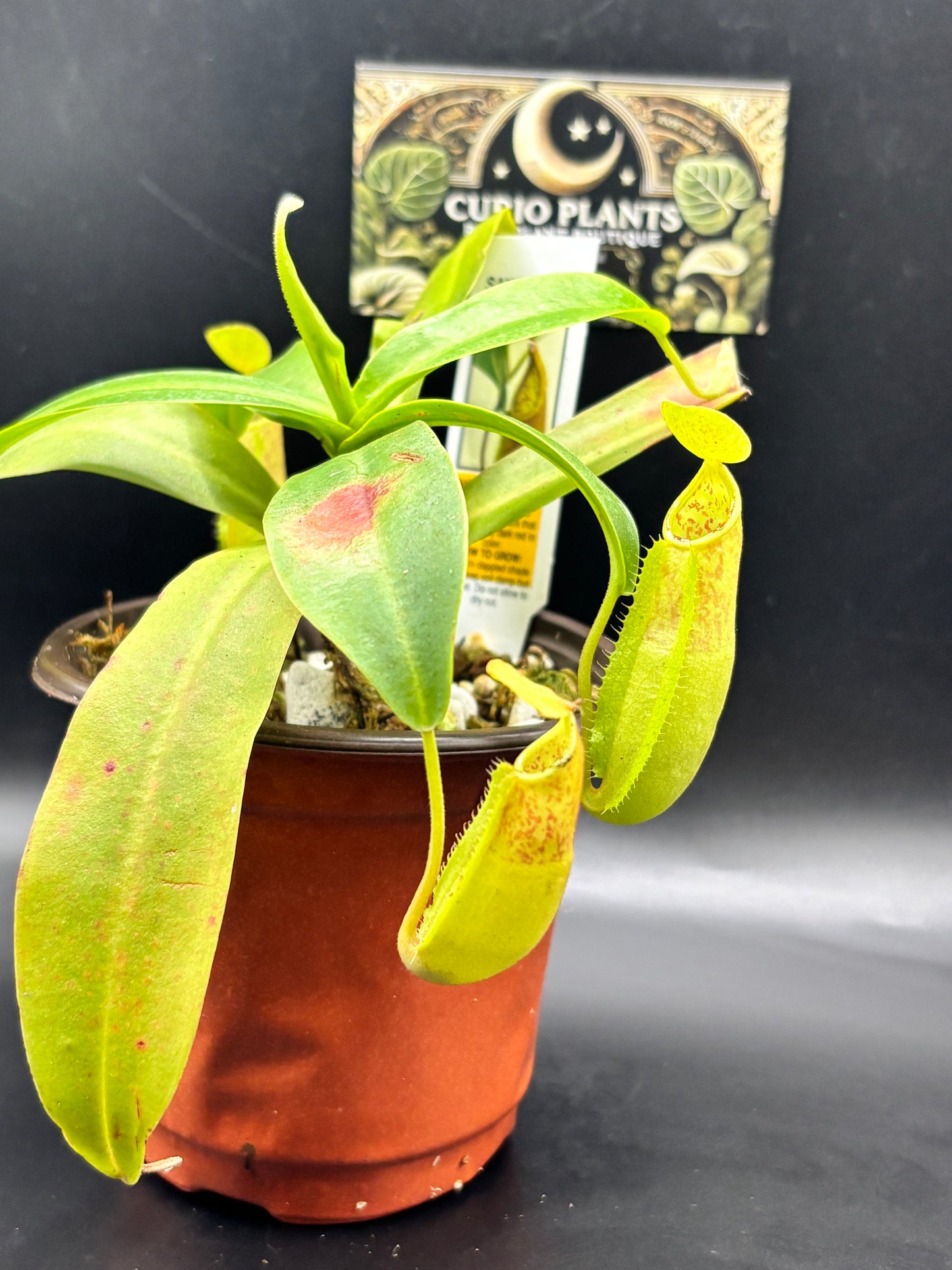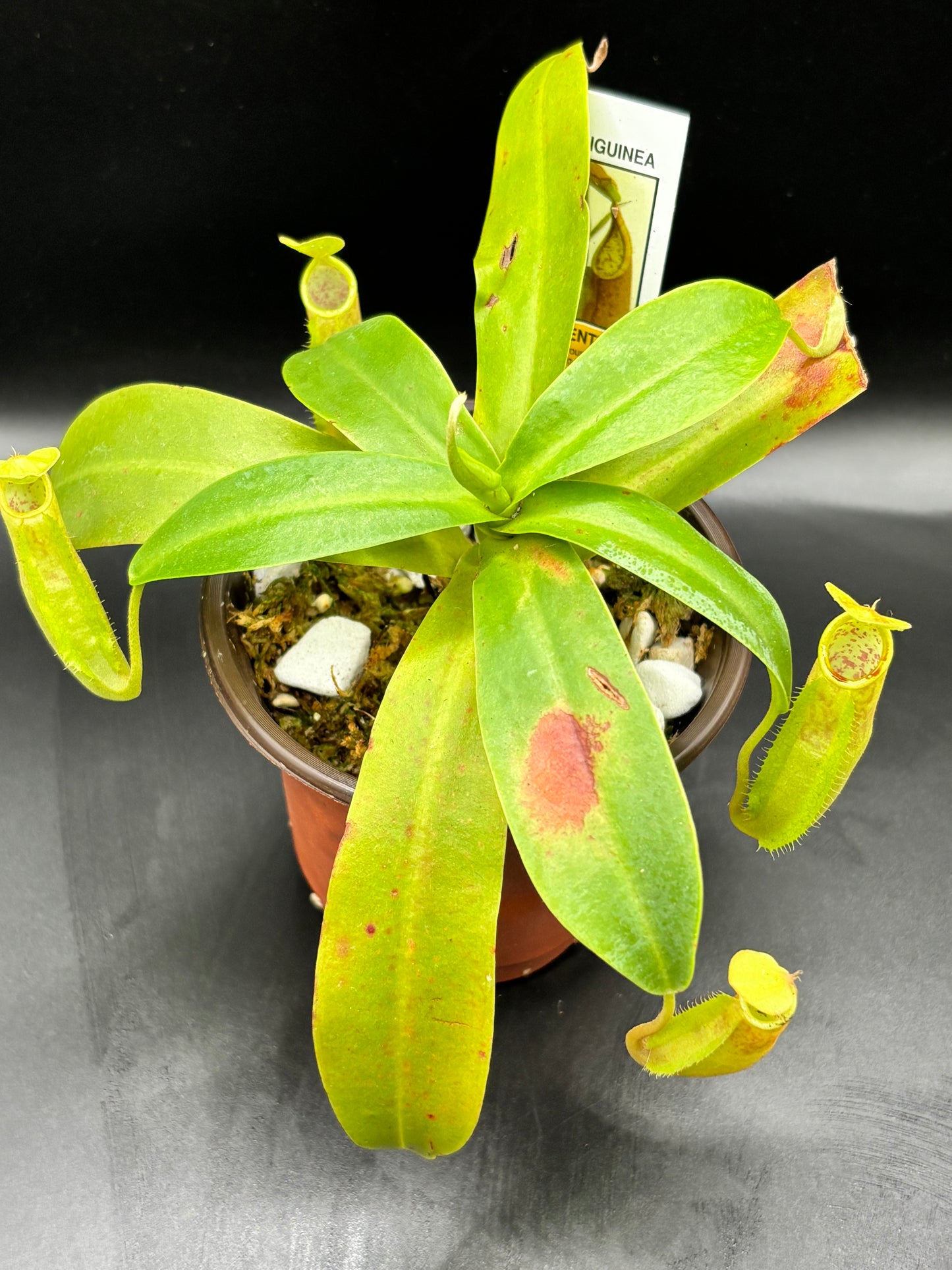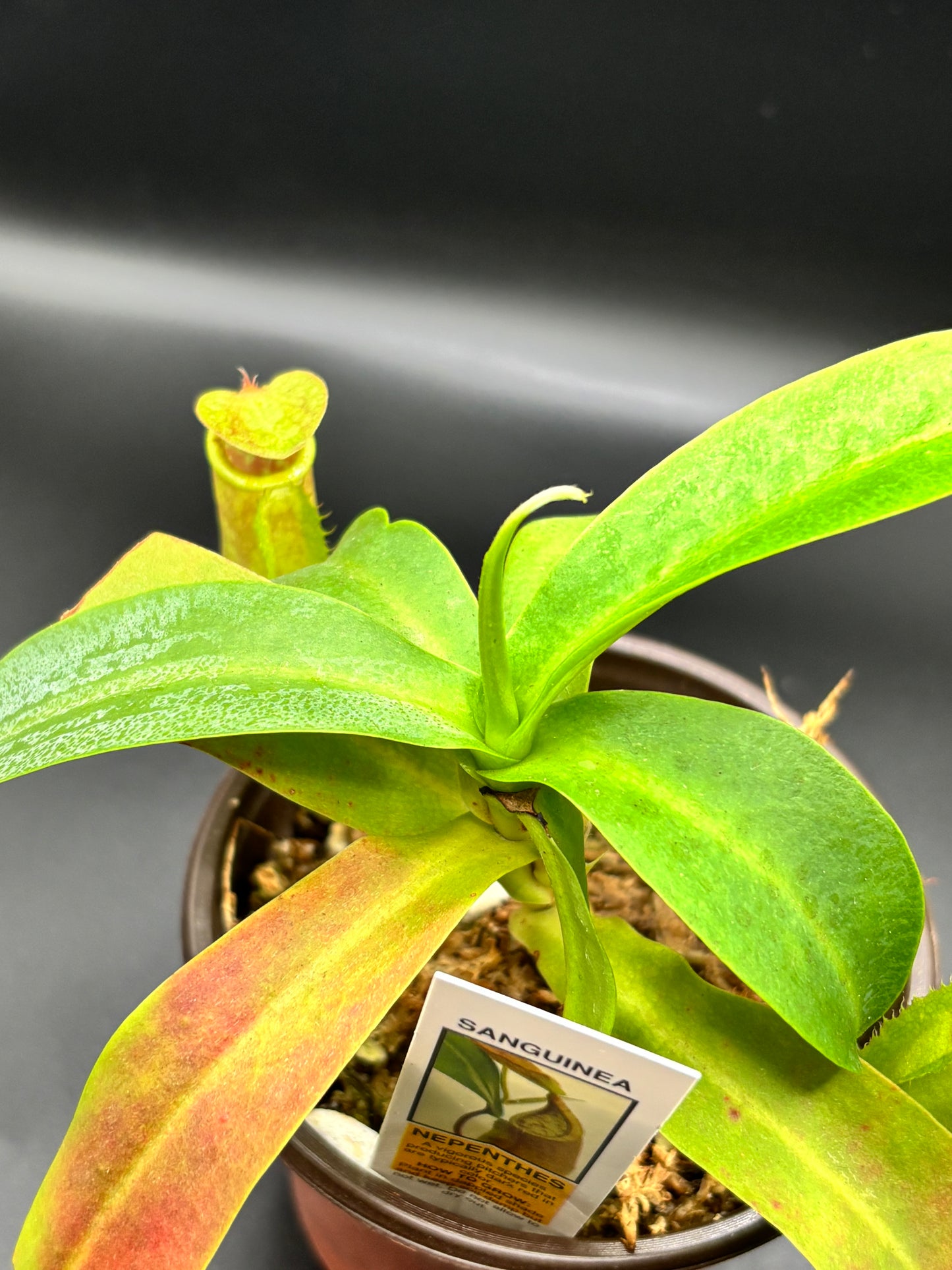Text block
Nepenthes sanguinea – A Towering Relic of Scarlet & Gold | Curio Plants carnivorous plant
Nepenthes sanguinea – A Towering Relic of Scarlet & Gold | Curio Plants carnivorous plant
Couldn't load pickup availability
Share
An Elegant Predator with a Voracious Appetite
A plant of imposing beauty and quiet menace, Nepenthes sanguinea is a highland marvel, its tall, flared pitchers painted in rich shades of crimson, amber, and copper. Unlike its delicate, ground-hugging relatives, this species reaches skyward, producing impressively large, vase-like traps designed to capture and digest unsuspecting prey.
More than a mere botanical curiosity, this Nepenthes is a statement piece, thriving in hanging displays, mist-laden terrariums, or grand tropical collections. Whether basking in soft morning light or waiting patiently for its next meal, Nepenthes sanguinea brings an air of untamed wilderness to any setting.
Why ‘Sanguinea’ is a Collector’s Essential
✔ Towering, Oversized Pitchers – Unlike smaller species, sanguinea produces substantial, tubular traps, some reaching up to a foot in length.
✔ A Tapestry of Rich, Warm Hues – Pitchers emerge in copper and bronze tones, deepening into shades of blood-red and gold.
✔ Resilient & Adaptable – A hardier, more forgiving species, well-suited for both seasoned collectors and newcomers to the world of Nepenthes.
✔ A Natural Pest Controller – Thrives on flies, ants, and other small insects, keeping unwanted pests at bay with silent efficiency.
✔ A Living Relic of Evolutionary Ingenuity – One of the oldest and most perfectly adapted insectivorous plants, bringing a touch of the prehistoric into the modern world.
A Steward’s Guide to Preservation & Cultivation
- Illumination: Prefers bright, indirect light to partial sun—intensifies pitcher coloration and enhances growth.
- Hydration: Requires pure rain, distilled, or RO water—keep soil evenly moist but never waterlogged.
- Atmospheric Conditions: Thrives in moderate to high humidity (50–80%), making it well-suited for terrariums, greenhouses, or humidified indoor spaces.
- Soil Composition: Requires a nutrient-poor, well-draining mix of sphagnum moss, perlite, and orchid bark, mimicking its native highland terrain.
- Feeding & Growth Encouragement: Prefers live or dried insects, though it can be supplemented with diluted Maxsea fertilizer for additional nutrition.
A Rare Botanical Offering – Secure Your Specimen Today
At Curio Plants, we select only the most robust and actively pitchering Nepenthes sanguinea specimens, ensuring strong root systems, well-formed traps, and optimal predatory function. Due to its slow-growing nature and high collector demand, availability is extremely limited. Secure yours today and introduce to your collection a botanical predator of rare and untamed beauty.
Luxury Packaging & Secure Shipping – A Highland Giant Delivered with Care














